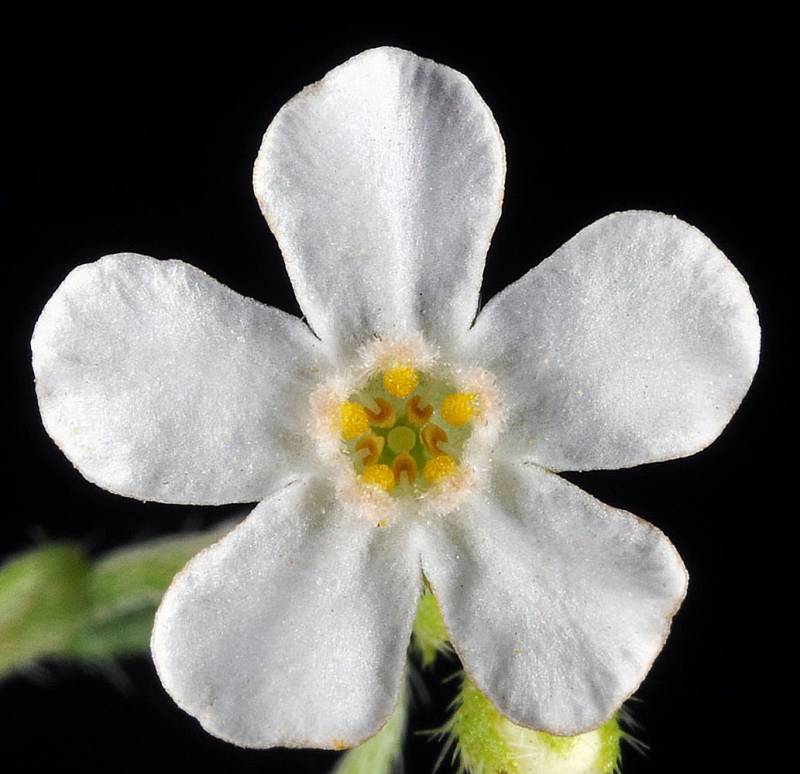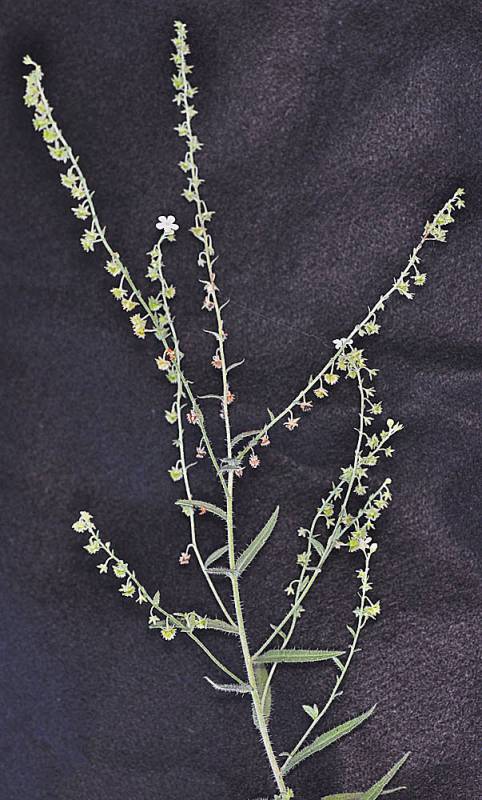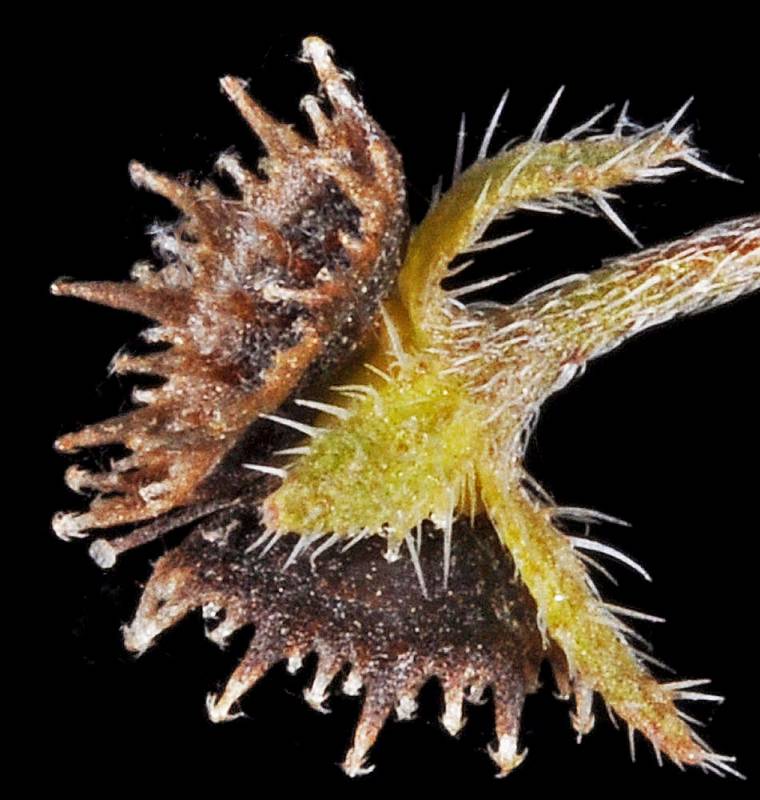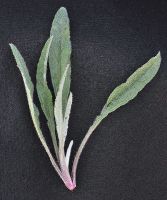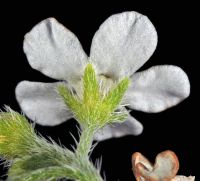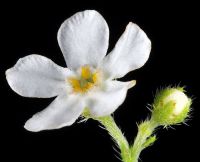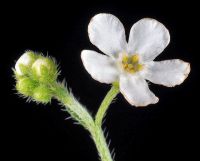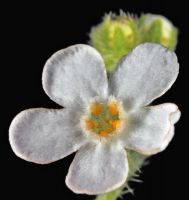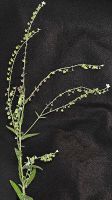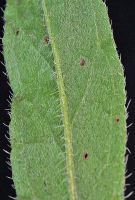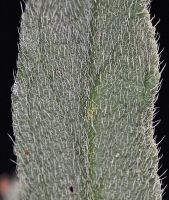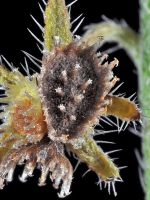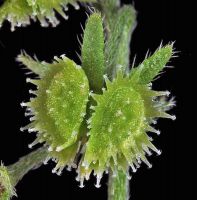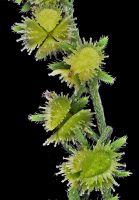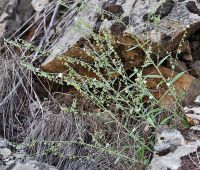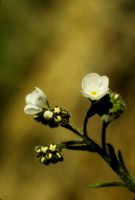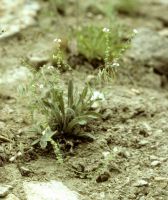Distribution: Occurring east of the Cascades crest in central and eastern Washington; central Washington to Idaho and Montana.
Habitat: Open or lightly forested areas, especially on talus or cliffs, and loose stream banks, in valleys and foothills to moderate elevations in the mountains.
Flowers: May-July
Origin: Native
Growth Duration: Perennial
Conservation Status: Threatened in Washington (WANHP)
Pollination: Bees, flies, butterflies
Perennial from a taproot, the several stems 2-8 dm. tall, with appressed and spreading-bristly hairs.
Basal leaved persistent, petiolate, oblanceolate to narrowly elliptic, 5-20 cm. long and 4-15 mm. wide, with short, stiff hairs; cauline leaves progressively smaller, sessile, lanceolate to linear.
Inflorescence of nearly naked false-racemes; calyx cleft to the base; corolla white with a yellow eye, 5-lobed, the tube slender, the limb spreading abruptly, 5-12 mm. wide; hairy appendages opposite the corolla lobes at the top of the tube; stamens not exerted; style shorter than the nutlets.
Nutlets 4, attached to the base of the style, with marginal prickles united nearly their length to form a cup-like border; intramarginal prickles small.
PNW Herbaria: Specimen records of Hackelia cinerea in the Consortium of Pacific Northwest Herbaria database
WA Flora Checklist: Hackelia cinerea checklist entry
OregonFlora: Hackelia cinerea information
E-Flora BC: Hackelia cinerea atlas page
CalPhotos: Hackelia cinerea photos

